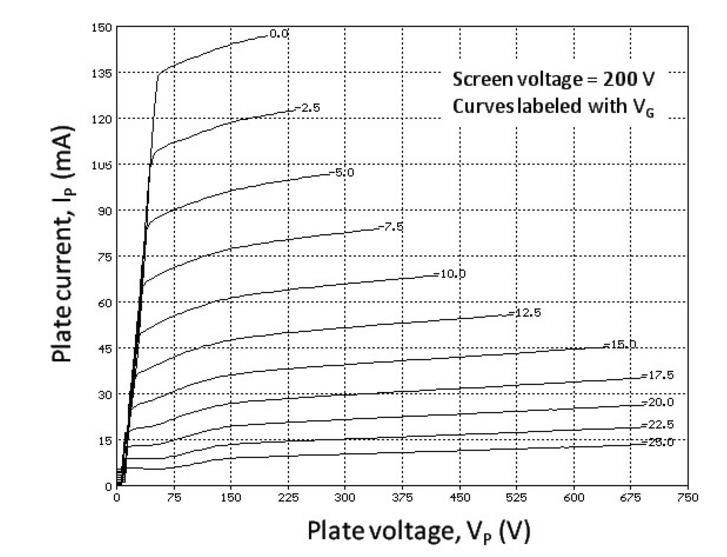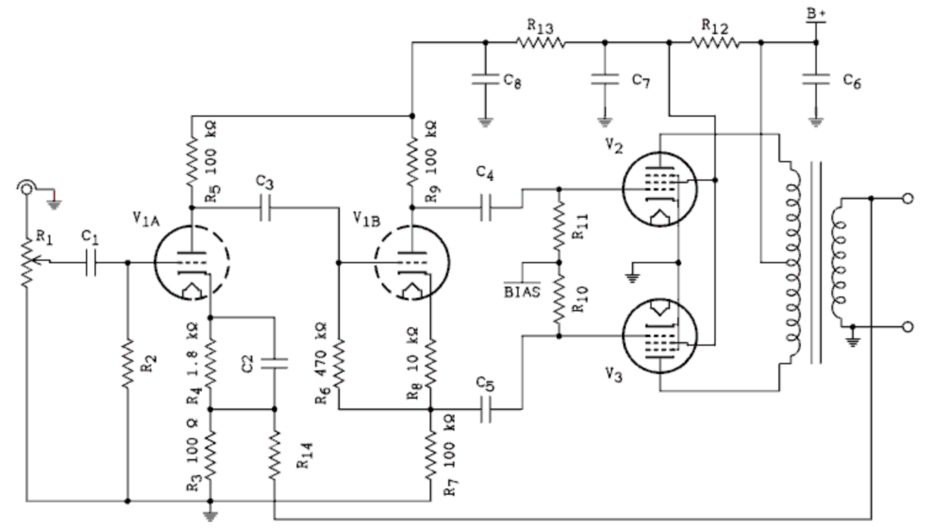Next: MOSFET Amplifier Up: ch4 Previous: Colpitts Oscillators
A metal-oxide-semiconductor field-effect transistor (MOSFET) has three terminals,
source, gate, and drain. In an n-MOSFET (or p-MOSFET), both the source S and drain
D are N-type (or P-type) and the substrate between them is P-type (or N-type).
The gate and the P-type substrate is insulated by a thin layer of silicon dioxide
(
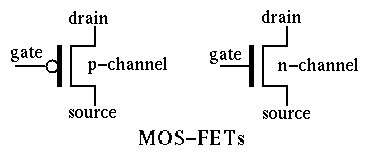
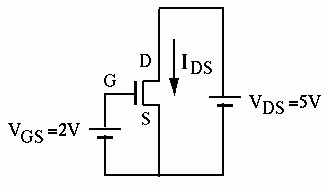
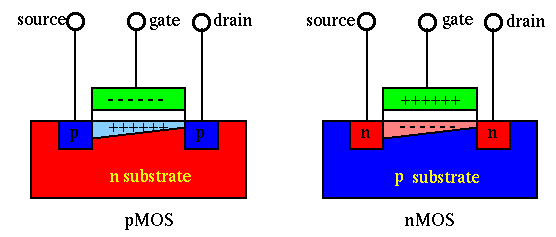
Typically the polarities of the voltages applied to the MOS transistor are such that
 and and |
(154) |
 is applied between gate and source, the
positive potential at the gate will induce enough electrons from the
P-type substrate (minority carriers) to form an electronic channel
called an inversion layer between source and drain, and a current
is applied between gate and source, the
positive potential at the gate will induce enough electrons from the
P-type substrate (minority carriers) to form an electronic channel
called an inversion layer between source and drain, and a current
 between source and drain is formed.
between source and drain is formed.
The MOS transistor can be used in either analog circuits or as a switch in binary logic circuit:
 |
(155) |
More acturately, the drain current


 |
(156) |
 is lower than the threshold voltage
is lower than the threshold voltage
 , no inversion layer is formed, and no current flows through S
and D. When
, no inversion layer is formed, and no current flows through S
and D. When  is higher than
is higher than  , the current
, the current  is
proportional to the difference squared.
is
proportional to the difference squared.
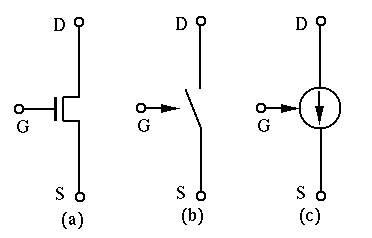
Moreover, the current 






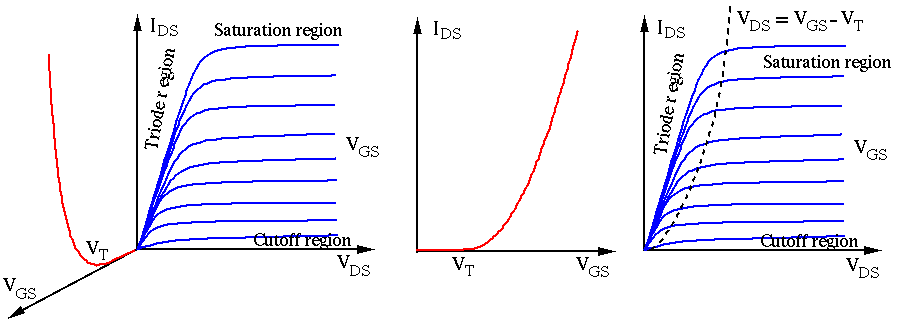
This function can be divided into three different regions:
 and and |
(157) |
 and and |
(158) |
 and
and  at both the S and D ends of the
inversion layer exceeds
at both the S and D ends of the
inversion layer exceeds  , some electrons as minority
carriers in the P-type substrate are pulled toward the gate to
form an inversion layer close to the gate to form an N-type
channel with certain resistance between S and D.
, some electrons as minority
carriers in the P-type substrate are pulled toward the gate to
form an inversion layer close to the gate to form an N-type
channel with certain resistance between S and D.  increases linearly as
increases linearly as  increases, with a coefficient
increases, with a coefficient
 (Ohm's law), and nonlinearly as
(Ohm's law), and nonlinearly as  increases (to pull more electrons toward the gate to enhance the
conductivity of the n-channel). Note that as
increases (to pull more electrons toward the gate to enhance the
conductivity of the n-channel). Note that as
 , the
inversion layer is narrower at the D end than the S end.
, the
inversion layer is narrower at the D end than the S end.
 but but |
(159) |
 at the S end exceeds
at the S end exceeds  , but
, but  at the D
end is lower than
at the D
end is lower than  . On the one hand, the increased voltage
. On the one hand, the increased voltage
 tends to increase
tends to increase  , on the other hand, the reduced
, on the other hand, the reduced
 makes the inversion layer at the D end narrow to the extend
that it is nearly closed (pinch-off). As the result, higher
voltage
makes the inversion layer at the D end narrow to the extend
that it is nearly closed (pinch-off). As the result, higher
voltage  does not cause more current
does not cause more current  (saturated), and
it is only affected by
(saturated), and
it is only affected by  .
.
In the plot of 


Example: Assume 
 , the MOSFET is in cutoff region with
, the MOSFET is in cutoff region with  independent of
independent of  .
.
 and
and
 , the MOSFET is in
linear or triode region with
, the MOSFET is in
linear or triode region with  affected by both
affected by both  and
and  .
.
 , the MOSFET is in saturation region with
, the MOSFET is in saturation region with
 determined only by
determined only by  .
.
Assume




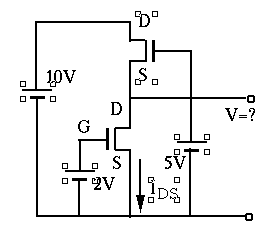









Comparison between BJT and FET
 . But as MOSFET's gate is
insulated from the channel (
. But as MOSFET's gate is
insulated from the channel (
 ), it draws virtually
no input current from the source and therefore has infinite input
resistance.
), it draws virtually
no input current from the source and therefore has infinite input
resistance.
 is proportional (
is proportional ( and
and  ) to its input
current (
) to its input
current ( or
or  ), but MOSFET is voltage (
), but MOSFET is voltage ( ) controlled.
Consequently, the power consumption of MOSFETs is lower than BJTs.
) controlled.
Consequently, the power consumption of MOSFETs is lower than BJTs.
The BJT and FET can be compared with the old technology of vacuum tube based on thermionic electron emission (heated filament). Although the specific physics of each of these devices is quite different from others, the working principles of these devices are essentially the same. In all three devices, a small AC input voltage (signal) is applied to the input terminal of the device (base, gate, or grid) to control the current that flows through the device (from collector, drain, or anode to emitter, source, or cathode, respectively), causing a much amplified voltage to appear at the output terminal (collector, drain, or anode) of the device.

